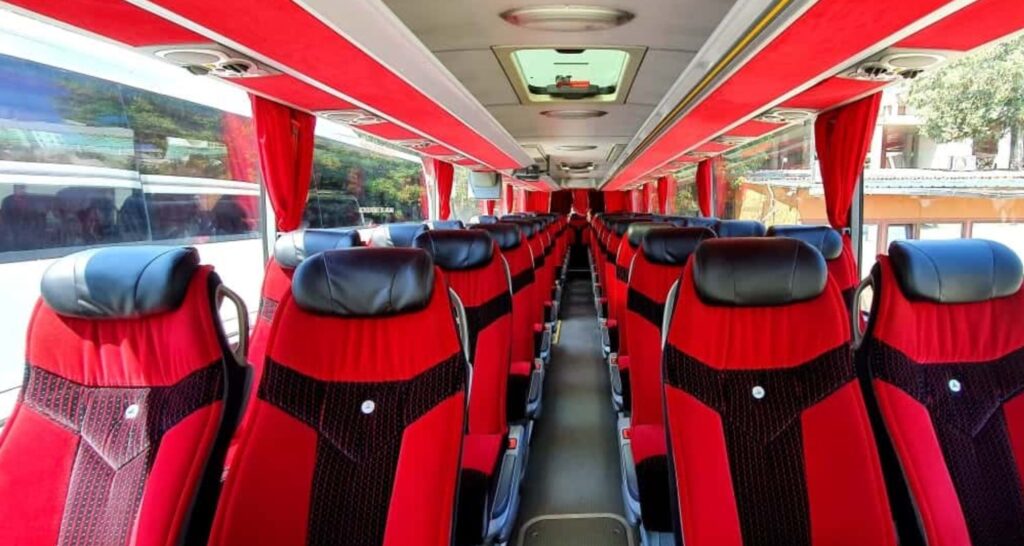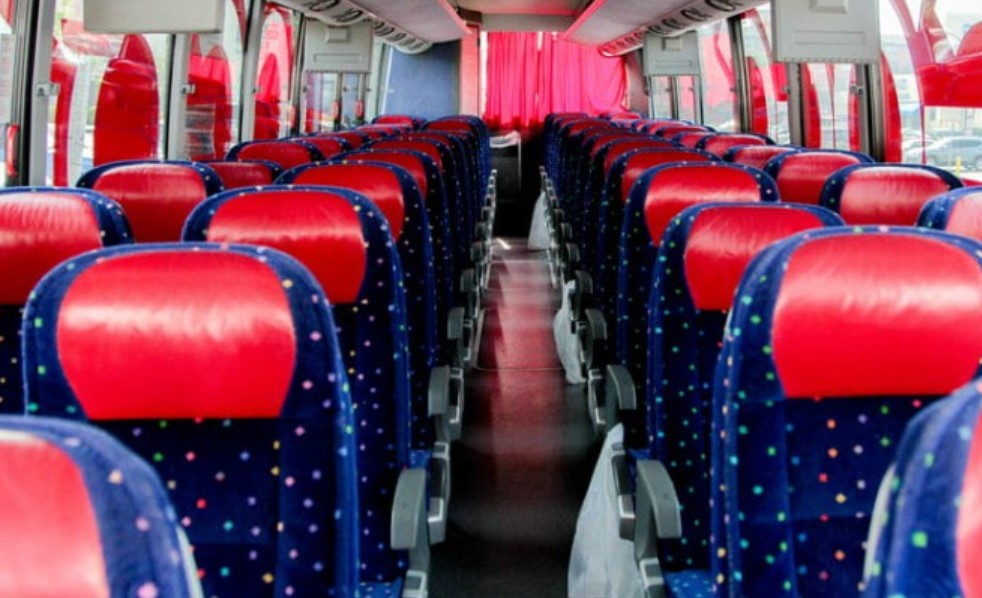Do Charter Buses Have Seat Belts? Quick Answer
When considering the safety features of charter buses, a key question often arises: Do Charter Buses Have Seat Belts? This inquiry is crucial for passengers prioritizing safety during their travels. Delving into this topic, we find a variety of practices and regulations surrounding seat belts in charter buses. This article provides an in-depth analysis, addressing the prevalent concerns and shedding light on this important safety feature.
Key Takeaways
- Charter buses may or may not have seat belts, depending on the region and the specific vehicle.
- Regulations regarding seat belts in charter buses vary by country and state.
- The age and model of the charter bus can influence the presence of seat belts.
- Safety standards and requirements for charter buses are continually evolving.
Do Charter Buses Have Seat Belts?
Yes, many charter buses have seat belts, but their presence is not universal. The installation of seat belts in charter buses depends on various factors, including the vehicle’s manufacturing date, the region’s safety regulations, and the policies of the charter bus company. Modern charter buses are more likely to be equipped with seat belts as part of enhanced safety measures.

Charter Bus Safety Regulations
Federal and State Laws
The presence of seat belts in charter buses is largely influenced by federal and state laws. In the United States, for instance, the National Highway Traffic Safety Administration (NHTSA) mandates that all newly manufactured buses be equipped with seat belts.
However, older models are not required to be retrofitted. State laws also play a significant role, with some states having stricter requirements than others.
Global Perspectives
Globally, the standards for seat belts in charter buses vary. In the European Union, for instance, regulations are more stringent, requiring seat belts in all seats of newly manufactured buses. Countries like Australia and Canada have similar requirements, emphasizing passenger safety.
Historical Context
Evolution of Safety Standards
The evolution of safety standards in the charter bus industry has been gradual. Initially, seat belts were not a standard feature in buses. However, as awareness of passenger safety grew, regulations began to change. The push for seat belts gained momentum following several high-profile bus accidents, leading to stricter safety requirements.
Impact of Technology
Advancements in technology have also played a significant role in the incorporation of seat belts in charter buses. Modern buses are not only equipped with seat belts but also feature advanced safety systems like electronic stability control and collision avoidance systems.
Passenger Safety and Seat Belts

Importance of Seat Belts
The importance of seat belts in charter buses cannot be overstated. Seat belts provide a crucial safety barrier, reducing the risk of injury or death in the event of an accident. They are especially vital in preventing passengers from being ejected from their seats.
Passenger Awareness
Despite the availability of seat belts, passenger awareness and usage are critical. Passengers need to be informed about the presence of seat belts and encouraged to use them throughout their journey.
Charter Bus Companies and Seat Belt Policies
Company Policies and Practices
Charter bus companies have varying policies regarding seat belts. While some prioritize modern buses with full-seat belt equipment, others may operate older models without these features. Researching a company’s fleet and safety policies is crucial for passengers.
Compliance and Enforcement
Ensuring compliance with seat belt policies is another aspect to consider. Some companies actively enforce seat belt usage, while others leave it to the discretion of passengers. The level of enforcement can significantly impact overall safety.
Types of Charter Buses and Seat Belt Availability
Variety in Fleet
The variety of buses within a charter company’s fleet can influence the availability of seat belts. Newer models are more likely to be equipped with seat belts, while older buses might lack this feature.
Retrofitting Older Buses
Retrofitting older buses with seat belts is a possibility, though not a common practice. The decision to retrofit depends on the company’s commitment to safety and the financial implications of such upgrades.
Safety Benefits of Seat Belts in Charter Buses

Reduced Risk of Injury
Seat belts in charter buses significantly reduce the risk of injury in accidents. They help restrain passengers, preventing them from being thrown around inside the bus or ejected in severe collisions.
Enhanced Passenger Confidence
The presence of seat belts enhances passenger confidence in the safety of their journey. Knowing that safety measures are in place can lead to a more relaxed and enjoyable travel experience.
Why Don’t Coach Buses Have Seatbelts?
Coach buses, often designed for long-distance travel, don’t uniformly have seat belts, a fact that puzzles many passengers. The primary reason for this lies in the historical design and safety regulations governing these vehicles.
Originally, coach buses were constructed with a safety concept known as ‘compartmentalization.’ This design involves closely spaced, high-backed, padded seats that effectively create a protective compartment.
In the event of a crash, these seats are meant to absorb impact, reducing the likelihood of passenger injury by keeping them confined within this space.
Furthermore, the large size and weight of coach buses contribute to their overall safety. In collisions, these buses are less likely to sustain the kind of damage that would necessitate seat belts for passenger safety. However, it’s important to note that the trend is slowly changing.
Newer models and regulations in some regions are starting to include seat belts for added safety, especially after notable incidents that have raised concerns about passenger safety in coach buses.
Why Bus Seats Don’t Require Seat Belts?
The absence of seat belts in many bus seats, especially in older and traditional models, is attributed to the concept of ‘compartmentalization’ as mentioned earlier.
This design is considered safe enough for the type of low-speed impacts most common in bus travel, particularly in urban settings. The robust and high-backed design of bus seats plays a significant role in protecting passengers without the need for seat belts.

Additionally, the implementation of seat belts in buses poses certain challenges. These include the cost and complexity of retrofitting older buses, the need to ensure that passengers, especially children, use seat belts correctly, and the potential for seat belts to be used improperly, causing more harm than good.
Regulatory bodies have weighed these factors against the relative safety record of buses and, for many years, have not deemed it necessary to mandate seat belts in all bus seats. However, this stance is evolving with advancements in safety technology and growing public awareness of passenger safety.
Are Charter Buses Comfortable?
Charter buses are generally designed with passenger comfort in mind, particularly for longer journeys. Modern charter buses often feature amenities such as reclining seats, ample legroom, air conditioning, onboard restrooms, Wi-Fi, and power outlets. The seats are typically cushioned and designed for support, making long trips more bearable.
The level of comfort can vary depending on the bus company and the specific vehicle. Newer and more luxurious models offer enhanced features like adjustable footrests, onboard entertainment systems, and sometimes even individual screens for passengers.
The overall maintenance of the bus also plays a crucial role in ensuring a comfortable experience. Regular cleaning, proper functioning of heating and cooling systems, and the condition of seats all contribute to the comfort level of a charter bus.
Conclusion
In conclusion, the presence of seat belts in charter buses varies based on a myriad of factors, including regional regulations, the age of the bus, and company policies.
Modern charter buses are increasingly equipped with seat belts, reflecting growing awareness and concern for passenger safety.
As regulations evolve and technology advances, the trend toward universal seat belt availability in charter buses is likely to continue. This evolution marks a significant step forward in ensuring the safety and well-being of passengers on the road.
Frequently Asked Questions
Can passengers be fined for not wearing seat belts on charter buses?
In regions where seat belt usage in charter buses is mandated by law, passengers may face fines for non-compliance. However, this is dependent on local laws and the level of enforcement by the bus company or driver.
How do charter bus companies enforce seat belt usage?
Enforcement of seat belt usage varies by company. Some companies may have strict policies and regular announcements, while others leave it to passenger discretion. Enforcement can be challenging due to the large number of passengers and the nature of charter bus trips.
Are there any exceptions to seat belt requirements in charter buses?
Exceptions to seat belt requirements in charter buses are typically based on the bus’s manufacturing date or specific state exemptions. For instance, vintage or historical buses might not be required to have seat belts.
Is it safe to travel in a charter bus without seat belts?
While modern safety standards favor the presence of seat belts, many charter buses without them still operate safely. However, the risk of injury in an accident can be higher without seat belts.

Welcome to the exhilarating world of Matt Rex, a professional car racer turned renowned vehicle enthusiast. Immerse yourself in his captivating blog as he shares heart-pounding adventures, expert reviews, and valuable insights on cars, trucks, jets, and more. Fuel your passion for speed and discover the beauty of vehicles through Matt’s engaging stories and meticulous expertise. Join the ever-growing community of enthusiasts who find inspiration and expert advice in Matt Rex’s blog—a digital hub where the thrill of speed meets the pursuit of knowledge.







